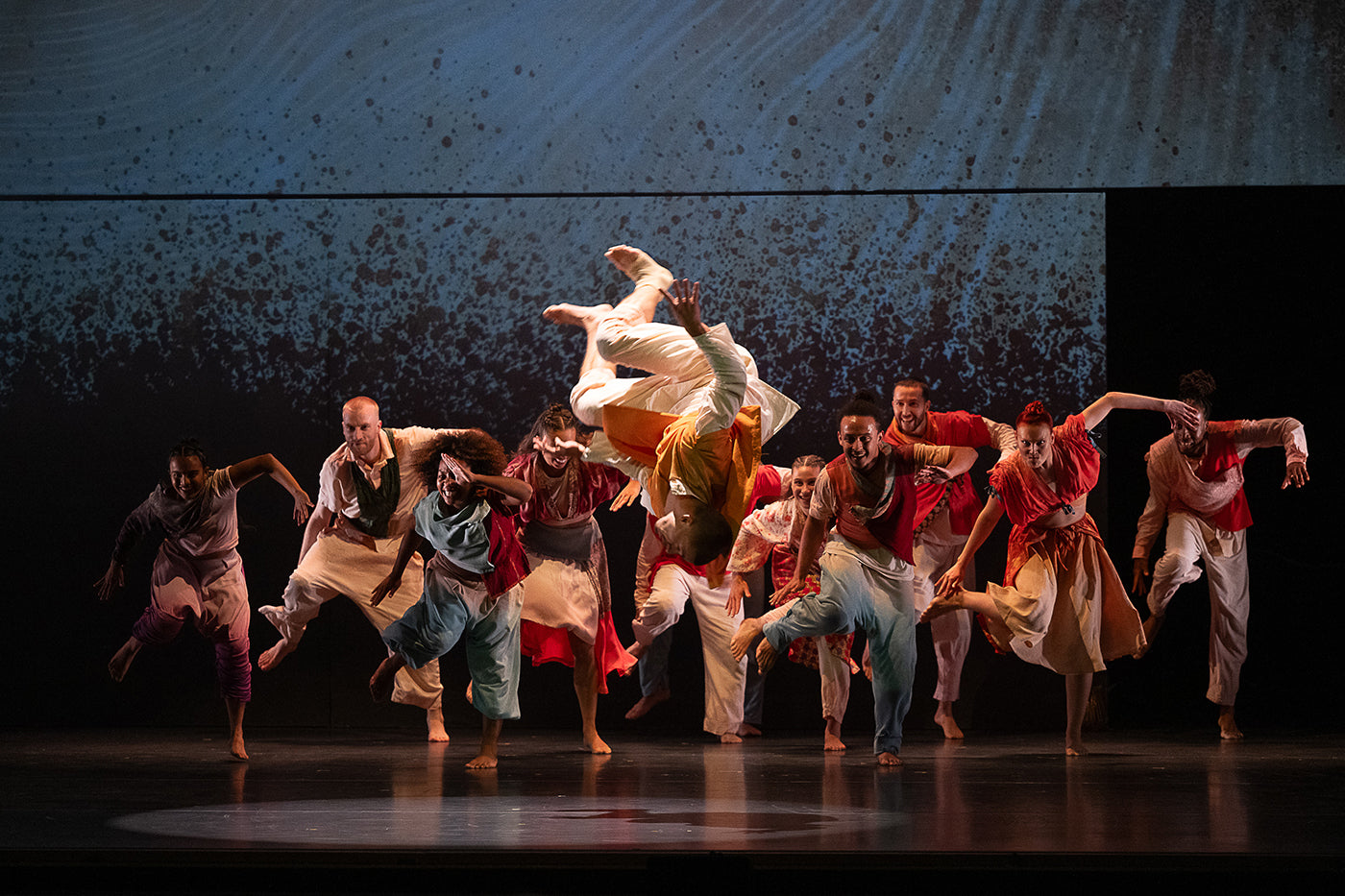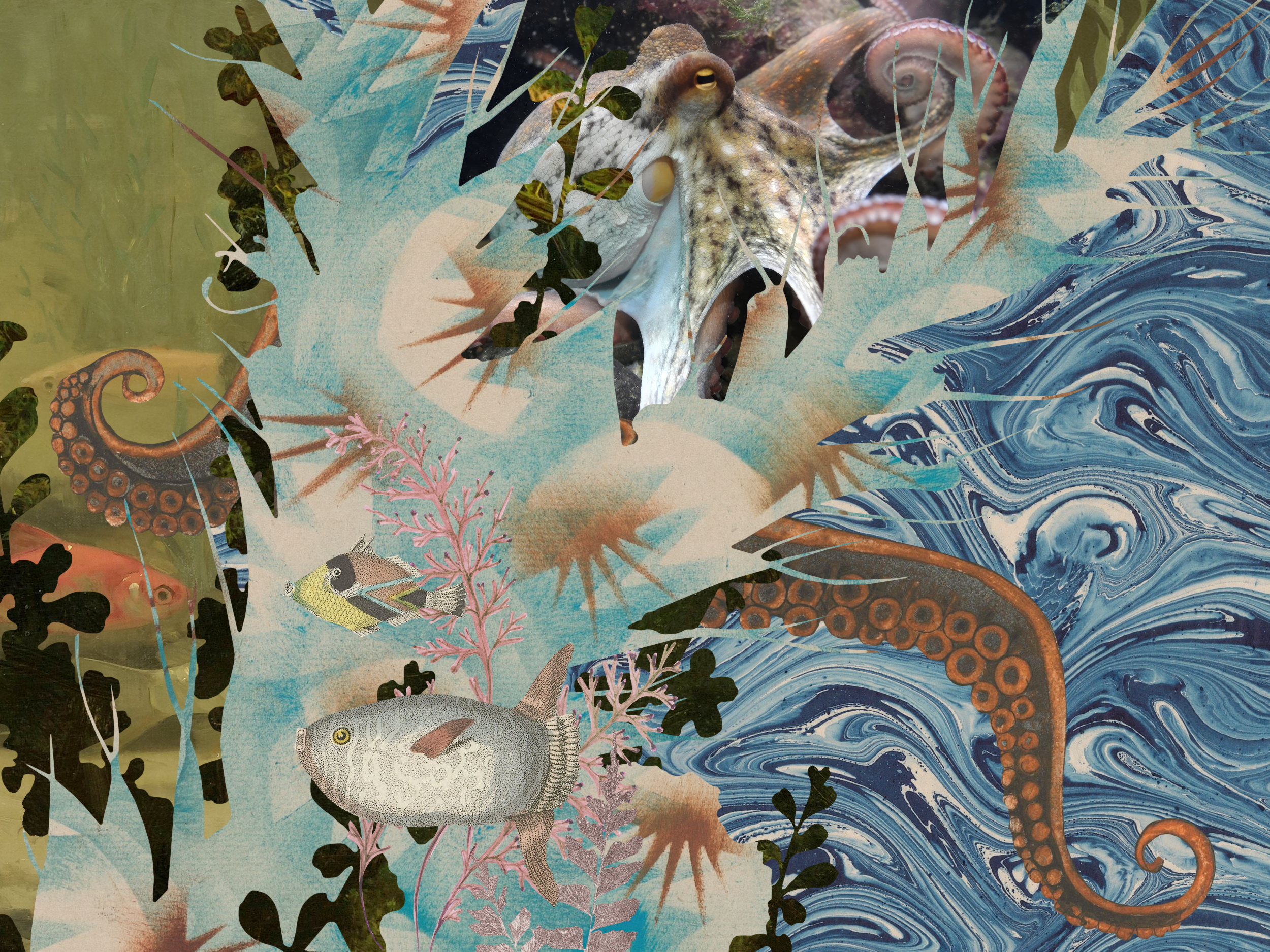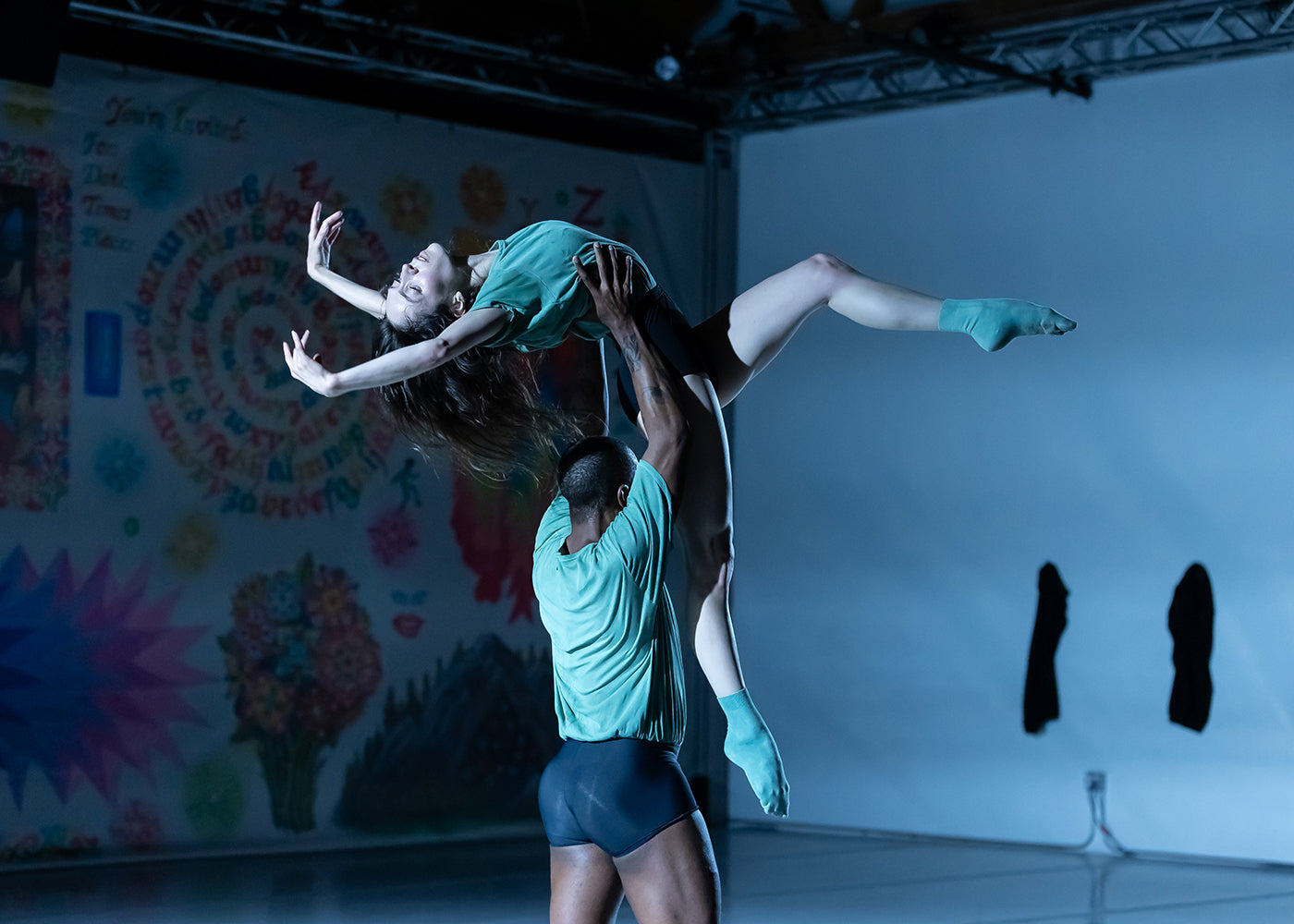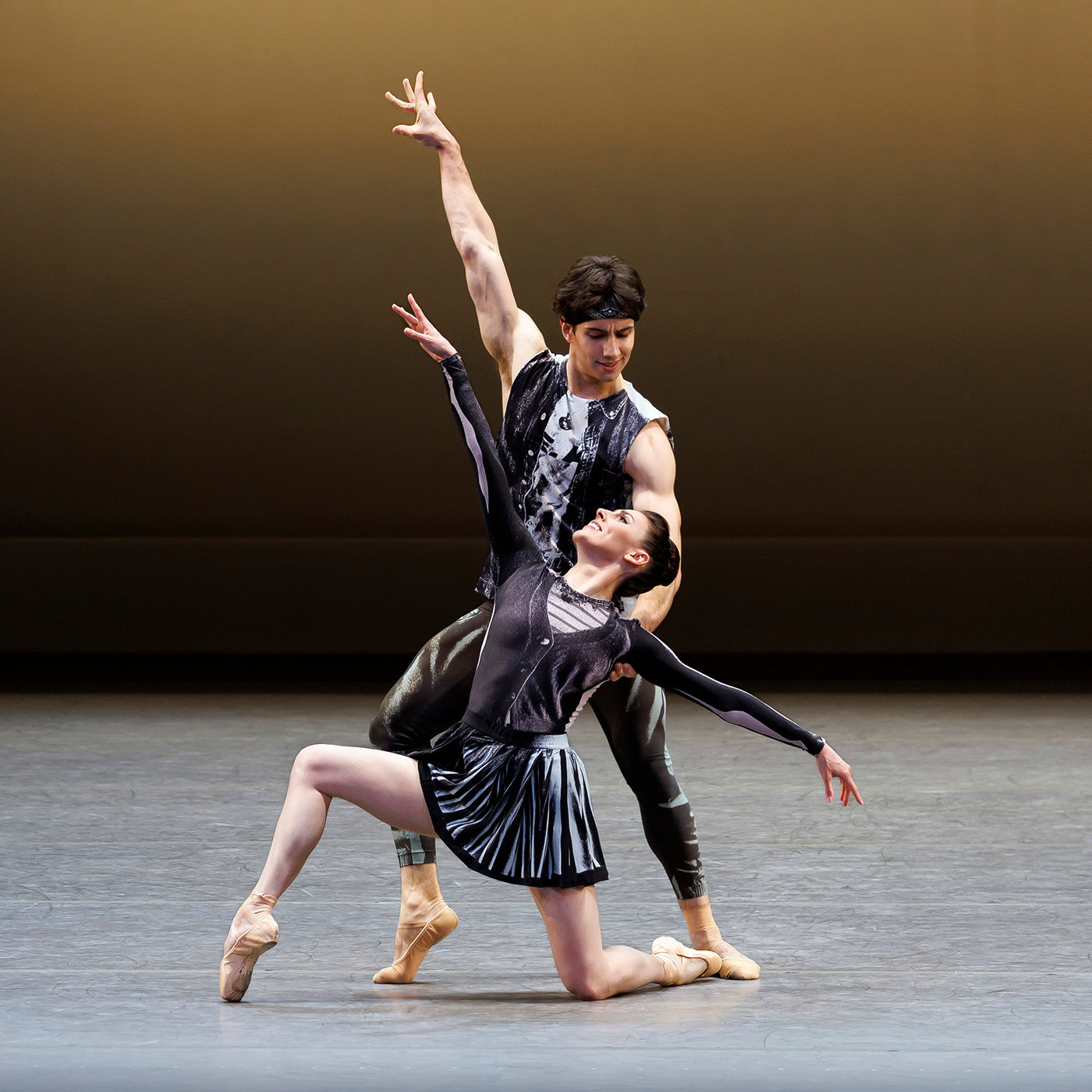“Dances at a Gathering”—which New York City Ballet recently performed along with 20 other of his ballets at the “Robbins 100 Festival” to commemorate the centennial of his birth—was the first piece Robbins choreographed for New York City Ballet after over a decade working on Broadway, choreographing “Gypsy” and “West Side Story” and other works that would cement Robbins as one of the United States’ most indelible artistic voices. It’s forgivable that audience members expect a story from Robbins; before his work on Broadway, the last ballet Robbins choreographed for City Ballet before he went on hiatus was “The Concert,” a slapstick farce meant to skewer the self-serious rituals of observing live performance. Set to the music of Frédéric Chopin, concert-goers in powder blue leotards tussle for seating space and passive aggressively scoot each other’s chairs out of the way, flop around the stage like rag dolls, model various hats, and play romance for laughs.
When Robbins also used Chopin’s mazurkas and waltzes some 13 years later for “Dances at a Gathering,” he wanted to create something different here. “Dances” would eschew theatricality and camp, and would instead take the form of a ballet of linked solos, duets and group dances. Dancers float and swoon into each other, alternating partners as the background of clouds changes overhead. Miraculously, “Dances” never feels too airy or too sweet. From time to time, dancers are permitted to just breathe in the space, taking slow steps around the stage. There’s something clear-eyed in these dances; half longing, half joy; the specific sadness of memory.
Though Robbins’ career spans six decades and over fifty pieces, the mood “Dances” evokes—a lyric wistfulness, some darkness haunting the edges—is the common thread in Robbins’ work, from his first piece, the 1944 sailor ballet “Fancy Free,” to his last, the ritualistic Russian wedding of “Les Noces” in 1998. In its Robbins 100 program, a two-week festival of over two dozen of Robbins’ pieces that took place between May 3rd and May 9th, New York City Ballet tries its hand at capturing all of Robbins’ choreographic history. What’s so impressive—beyond the freshness and energy that New York City Ballet company members brought to these performances on the 100th anniversary of Jerome Robbins’ birth—is that few choreographers could successfully carry an entire festival with their work alone.
The dances chosen for the performances on May 17th and May 18th work to foreground Robbins’ range as a choreographer, a choice that reveals a preference for range over program cohesion.
May 17th’s performance featured dances that shuttled back and forth across time, a lineup that included “Interplay” (1945), “In the Night” (1970), “The Cage” (1951), “Other Dances” (1976) and “Fanfare” (1953). While the sequence of these felt curiously atemporal, two performances in particular stood out from the rest. The first was Joaquin De Luz in the pas de deux “Other Dances.” Dancing a role that Mikhail Baryshnikov originated, De Luz pulled from his predecessor’s boyish charisma and made the choreography—interspersed with heel-toe steps and Russian folk steps—feel natural and off-the-cuff.
The second standout performance belonged to Sara Mearns for her performance in “In the Night.” Three couples dance alone, women dressed in evening gowns, on a stage lit up by stars. The first pas de deux feels like first love; the dancers move tenderly and tentatively, exploring each other’s movements as if learning a new language. The second couple’s dance feels elegant but practiced, the stars in the background taking the shape of three chandeliers. Finally the third couple, danced by Mearns and Jared Angle, embody the intensity of a relationship at its breaking point. Robbins’ choreography flings the two together and sends them, reeling, running across opposite sides of the stage. If anyone could take melodrama and make it feel earned, it’s Mearns; at one point, she dashes across the stage to her partner only to kneel at his feet, offering acquiescence in the slow unfurling of her wrists. Their love might be toxic, but it’s inexorable. He lifts her up to her feet and carries her, offstage, in his arms.
If anyone could take melodrama and make it feel earned, it’s Mearns; at one point, she dashes across the stage to her partner only to kneel at his feet, offering acquiescence in the slow unfurling of her wrists.
Friday’s program, a triple bill that included “Opus 19/The Dreamer” (1979), “Dances at a Gathering” (1969) and “Glass Pieces” (1983) was dramatically more cohesive, a choice that allowed the dancers to shine. Though “Glass Pieces” ended the show with a postmodern eye on the future, its full cast filling the stage like a thrumming cityscape, it’s “Dances at a Gathering” that shows where New York City Ballet is heading. In a part originally danced by Violette Verdy, Ashley Bouder dazzled in a brief but virtuosic solo, with quicksilver steps that seem to double back on themselves. Abi Stafford’s movements brought a gravity to the dances; even the connections between her steps were lyrical and flowing. And as one of the newest principal dancers in the cast, Lauren Lovette is a wonder to watch, a natural performer whose presence onstage felt effervescent and genuinely joy-filled.
The most startling moment of “Dances” occurs at the end of the ballet, with the cast almost entirely motionless. This section, which Robbins referred to as “The Storm,” takes place in an interior setting. “It’s as if people had come back to a hall they once danced in,” Robbins said in a 1976 interview. Though Robbins did not specify the interior—“it might be a stage, it might be a ballet room, it might be a terrific old ballroom in a castle which is now deserted,” he envisioned this section as a sort of return.
Returning to Robbins’ memory landscapes while bouncing between moods and decades, the two performances on May 17th and 18th never seemed repetitive or too self-referential; instead they show a choreographer whose works evolve and shift to reflect the ethos of their era, never losing their groundedness and sense of the real.









comments